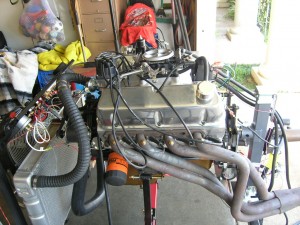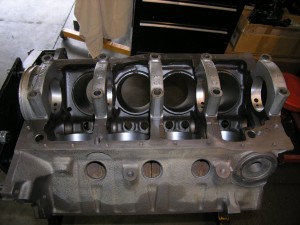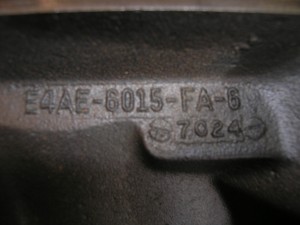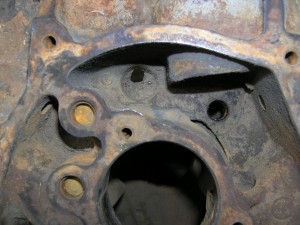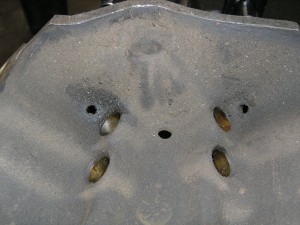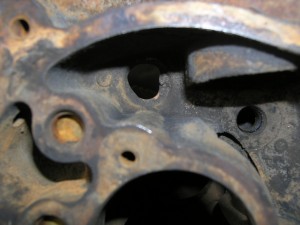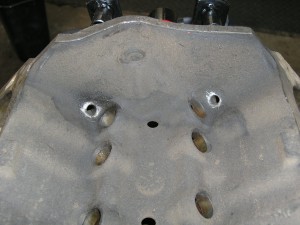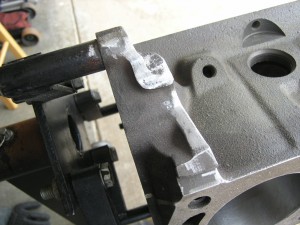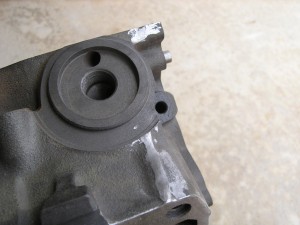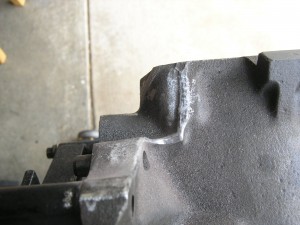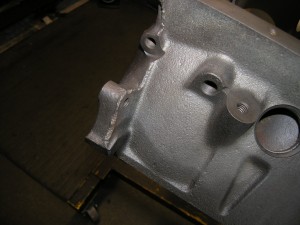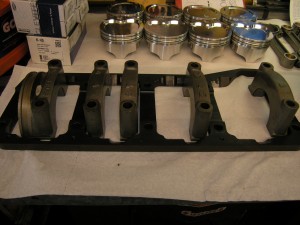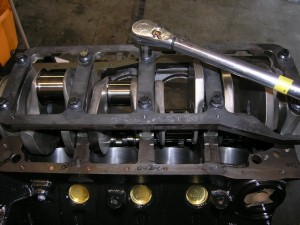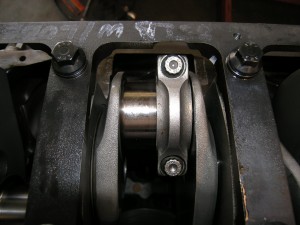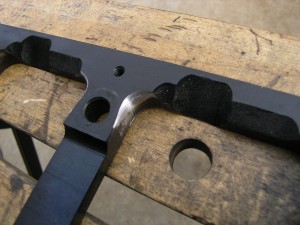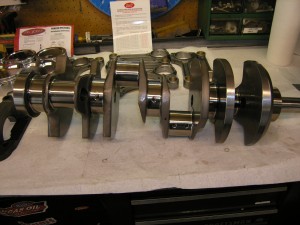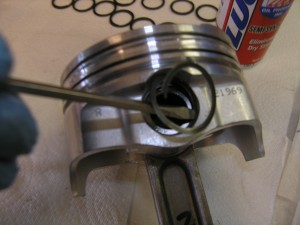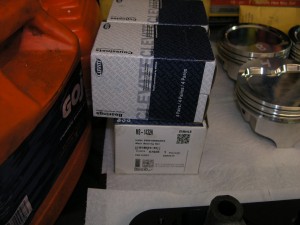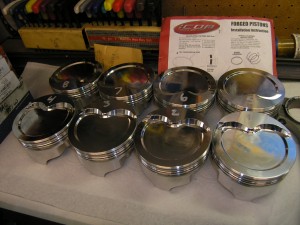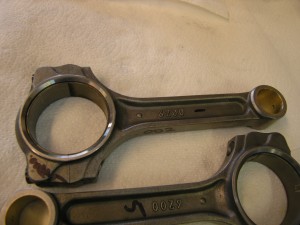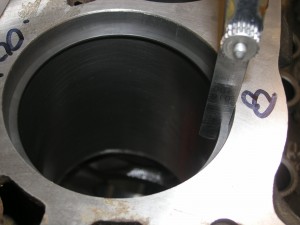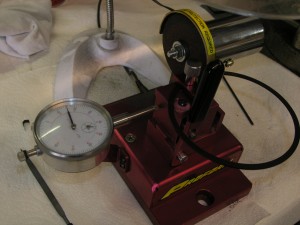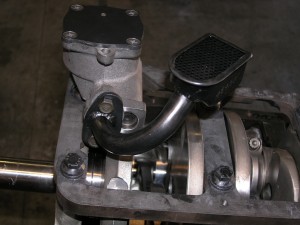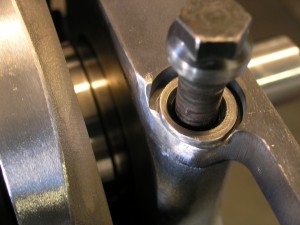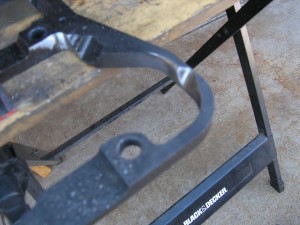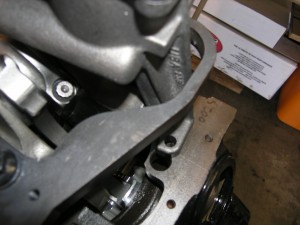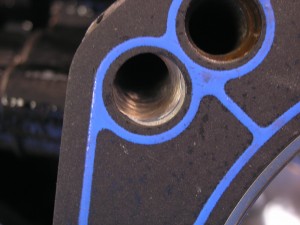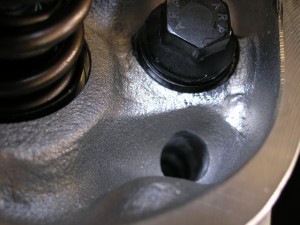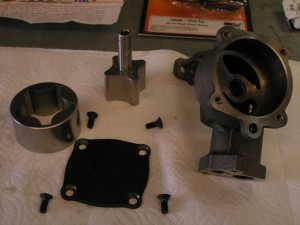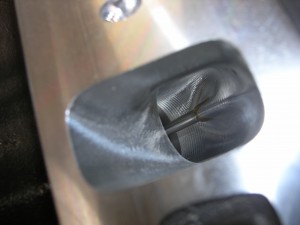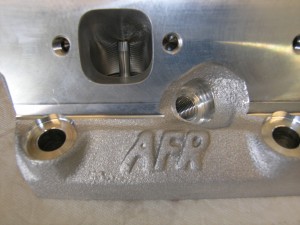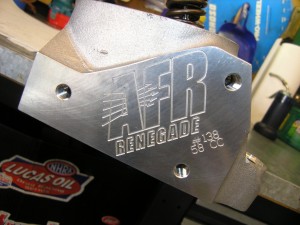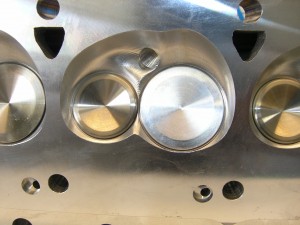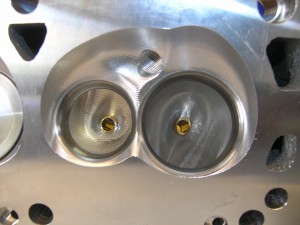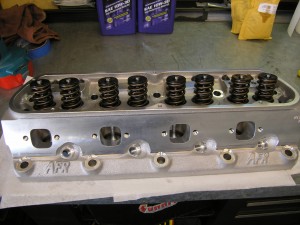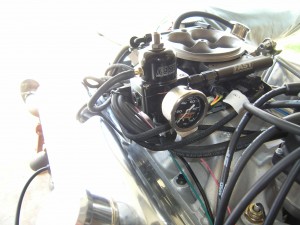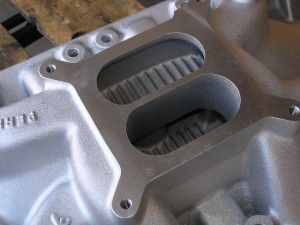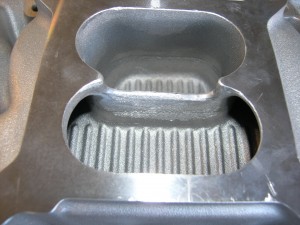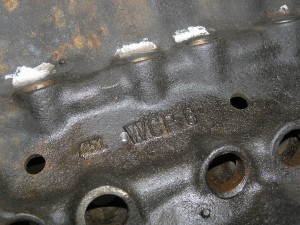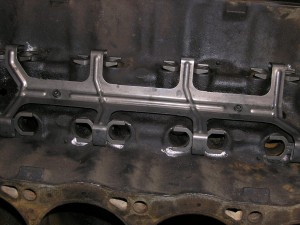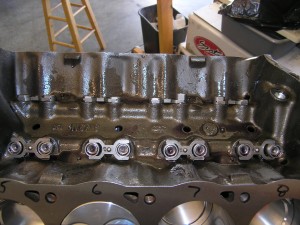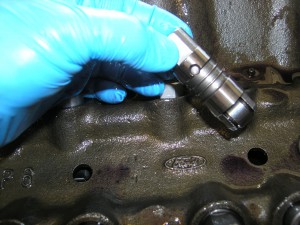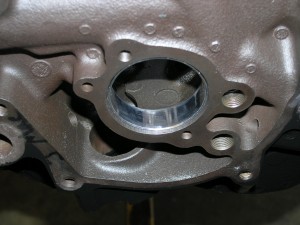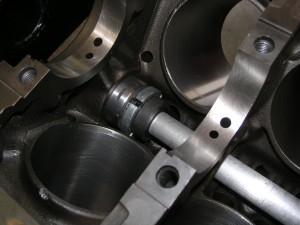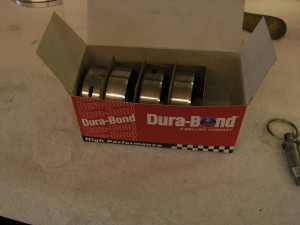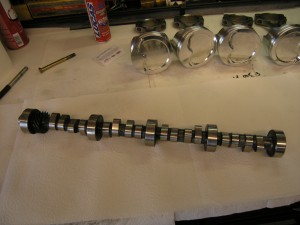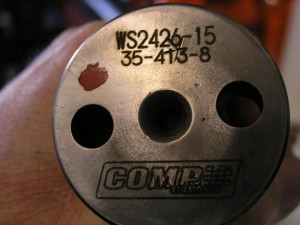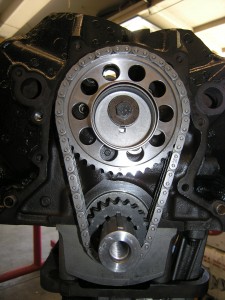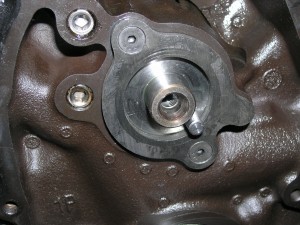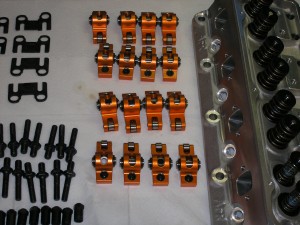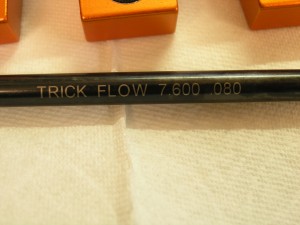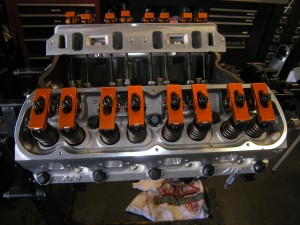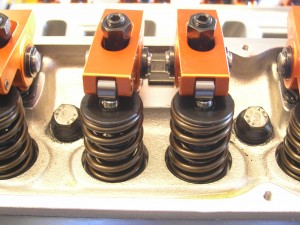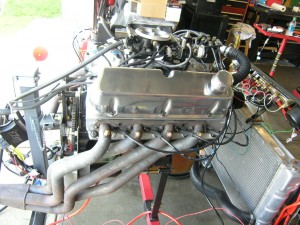Ford 351W (393 stroker) 450 horsepower – 500 Lb-Ft torque
A 450 horsepower – 500 Lb-Ft torque 9.75/1 Fuel injected 351 Windsor/393 stroker small block Ford. The goal with this build was low RPM torque that could move a 4000 pound 56′ Mercruiser, have great street manners, and run on pump gas.
Ford 351W (393 Stroker) “The Foundation”
The build started with a mid-1980’s non-roller 351 W, 2 bolt main, 1 piece rear main seal block. A non-roller block was used because some of the newer late 80’s/early 90’s roller blocks can have stress cracks in the valley above the cam bearings. The non-roller 351W blocks can be easily converter to roller blocks and have proved to be crack free.
The block was hot tanked, magniflux’d, bore and honed .030 with a torque plate, line hone, and decked. The extra casting flash was ground off and the oil holes in the lifter valley were opened up to ensure the oil returns to the oil pan without restriction.
Before – from the factory
After it has been opened up
Grinding off the excess casting flash makes the engine easier to work on and helps eliminate stress cracks.
Ford 351W (393 Stroker) “Bottom End”
Over 500 Lb-Ft of torque can put quite a strain on the bottom end so a cap girdle was used along with ARP main cap bolts to ensure everything stayed tight and in-line.
The 3.850″ stroke of the crankshaft didn’t clear the main gridle so it needed to be opened up at the big end of the connecting rods
A forged SCAT 3.850″ stroke crankshaft, forged SCAT 6.2″ connecting rods with ARP bolts, forged 4.030″ ICON Pistons, Speed-pro single moly piston rings, and Cleveite bearings completed the bottom end.
Ford 351W (393 Stroker) Oiling System
A Mellings high volume oil pump was used but the pump was to large for the main girdle. To keep the integrity of the oil pump it’s better to grind the main gridle not the oil pump
From the factory the cylinder heads oil drain back holes can sometimes be mis-aligned. To ensure oil flows freely they were opened up and chamfered
The oil pump was disassembled to ensure the clearances were within spec and the pressure relief value worked properly
Ford 351W (393 Stroker) “Cylinder Heads and Induction System”
AFR Renegade 185 cc heads were used they’re CNC ported with excellent flow numbers. The small 185cc heads were used to ensure good low RPM torque over higher RPM horsepower. The smaller heads help increase the intake velocity at lower RPM creating more responsive at low RPM
To ensure a maintenance free fuel system the FAST EZ fuel injection system was used it’s a self learning and easy to install
An Edelbrock RPM Performer dual plane intake manifold matched the camshafts 2500 – 6500 RPM range. Most fuel injection systems do not like full dual plane intake manifolds so 1/2″ was removed from the center divider
Before After
Ford 351W (393 Stroker) Valve Train
An earlier a non-roller block was used so I needed to install a Comp Cams conversion kit for the hydraulic roller cam. A lifter valley and “wish bones” are used over the heavier more costly linked lifters
Two small 1/4″-20 holes are drilled and tapped into the lifter valley floor to hold down the lifter “Spider”. The area around the lifters needed to be opened up to ensure full movement
A set of Dura-Bond high performance camshaft bearing were installed.
A Comp Cams XR264RF-HR10 small base circle camshaft was used. A small base circle camshaft is required to ensure proper oiling to the lifters. If a standard base circle camshaft is used with the non-link bar style roller lifters they extend to far out of the lifter bore blocking the oil passages and reducing the oil moving through the system
Because the block was line honed a -.005 smaller double roller timing chain with a needle bearing thrust washer was used. Notice the flat head Allen screws used to hold the thrust plate in place they are needed to create a flat surface for the timing chain thrust bearing.
A set of Trick flow 7.600″ .080″ thick push rods along with a set of 1.6 ratio Harland Sharp full roller rocker arms were used
Ford 351W (393 Stroker) “Test run”
A quick test run on the engine stand ensured all systems were worked. After setting the parameters in the FAST EZ EFI the engine started quickly. Timing was set to 14 degrees at idle of 850 RPM and 36 degrees total all in at 3500 RPM. The air/fuel ratio’s begin to reach their target settings the longer it ran. The engine is ready to install in the 56″ Mercury Mercuriser and after about a tank of fuel will be fine tuned for many years of trouble free driving.
Click here to see the engine on the run stand
450 Horsepower – 500 lb-Ft Torque Ford 351w / 393 stroker engine.
Contact JMMcKindley990@gmail.com if you’d like more details on this engine build.
